if you don,t read thru the sub-links youll miss a great deal of useful info in this thread
There are two basic types of injectors. Low impedance injectors with a resistance of around 2.5-3 ohms, and high impedance injectors of around 12 ohms. This can easily be measured by a multimeter
the newer injector designs tend to fog fuel into the port air stream rather than squirt a stream of fuel into the intake port,and let the heat and impact from the jet of fuel with the back of the intake valve and air turbulence disperse it thru the cylinder volume and, remember the finer the droplet size the more efficiently it will burn, and the lower the emissions tend to be so if your running original vintage injectors from the early or mid 1980s upgrading may help 30 year old injectors, a quick way to spot a faulty injector is with an IR temp gun, which quickly lets you locate a cylinder thats producing a different exhaust temp than the other cylinders which results from a clogged or always open injector
Ive found its a whole lot faster to use a quality IR temp gun
(Ive used this one for years)
Wide temperature range from -58 to 1832°F (-50 to 1000°C)
many temp guns don,t read high enough or accurately enough
http://www.professionalequipment.com/ex ... ermometer/
that you can use on the engine to check ALL 8 exhaust temps, individually, this quickly locates plugged injectors or vacuum leaks ETC
http://www.professionalequipment.com/xq/ASP/ProductID.3461/id.22/subID.177/qx/default.htm

when selecting an IR gun for automotive use, you really want to be able to read from 0 F deg-about 1400F deg. to cover most conditions you'll test for
heres the one I use...(THIS TOOL ABOVE)...now ILL grant you , that you can buy a whole lot cheaper tool for checking tires, but I use mine basically for reading header temps, RADIATOR TEMPS AND AIR CONDITIONER TEMPS, and to detect mixture or ignition problems or missing cylinders and you may not want to spend the money,but its an excellent tool, that's been consistently a huge time saver on tracking down
viewtopic.php?f=44&t=579&p=743&hilit=+infrared+tuning#p743
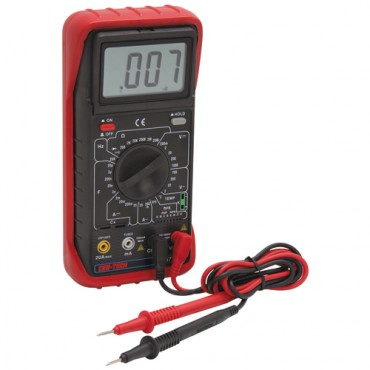
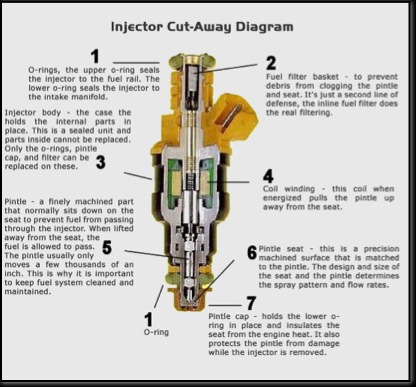
replacement injector pig tails are available at rock auto for less than $5 each
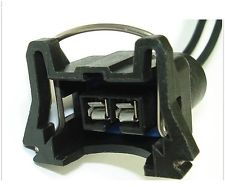
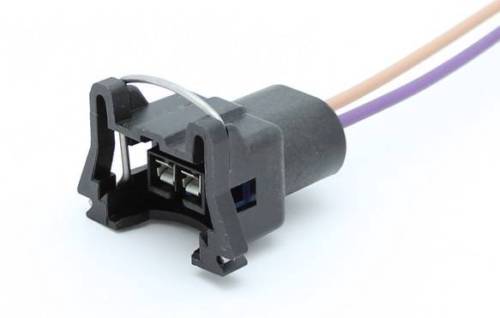
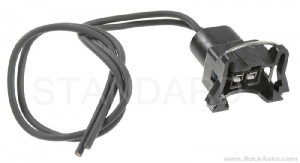
viewtopic.php?f=55&t=606
across the two electrical terminals. in the injector
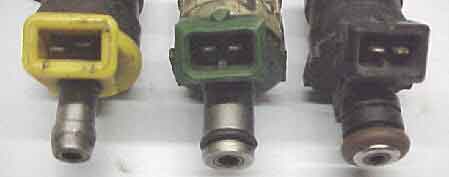
viewtopic.php?f=55&t=3108
most American cars use the high impedance injectors


you can use noid lights to verify the harness is providing the injectors with electric control pulses.
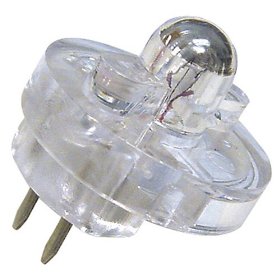
viewtopic.php?f=55&t=2640
viewtopic.php?f=55&t=1241
viewtopic.php?f=55&t=606&hilit=noid+injector
howstuffworks.com
posted this info
"When the injector is energized, an electromagnet moves a plunger that opens the valve, allowing the pressurized fuel to squirt out through a tiny nozzle. The nozzle is designed to atomize the fuel -- to make as fine a mist as possible so that it can burn easily.
The amount of fuel supplied to the engine is determined by the amount of time the fuel injector stays open. This is called the pulse width, and it is controlled by the ECU.
Engine Sensors
ÂIn order to provide the correct amount of fuel for every operating condition, the eÂngine control unit (ECU) has to monitor a huge number of input sensors. Here are just a few:
* Mass airflow sensor - Tells the ECU the mass of air entering the engine
* Oxygen sensor(s) - Monitors the amount of oxygen in the exhaust so the ECU can determine how rich or lean the fuel mixture is and make adjustments accordingly
* Throttle position sensor - Monitors the throttle valve position (which determines how much air goes into the engine) so the ECU can respond quickly to changes, increasing or decreasing the fuel rate as necessary
* Coolant temperature sensor - Allows the ECU to determine when the engine has reached its proper operating temperature
* Voltage sensor - Monitors the system voltage in the car so the ECU can raise the idle speed if voltage is dropping (which would indicate a high electrical load)
* Manifold absolute pressure sensor - Monitors the pressure of the air in the intake manifold
* The amount of air being drawn into the engine is a good indication of how much power it is producing; and the more air that goes into the engine, the lower the manifold pressure, so this reading is used to gauge how much power is being produced.
* Engine speed sensor - Monitors engine speed, which is one of the factors used to calculate the pulse width
There are two main types of control for multi-port systems: The fuel injectors can all open at the same time, or each one can open just before the intake valve for its cylinder opens (this is called sequential multi-port fuel injection).
The advantage of sequential fuel injection is that if the driver makes a sudden change, the system can respond more quickly because from the time the change is made, it only has to wait only until the next intake valve opens, instead of for the next complete revolution of the engine. "
http://www.sdsefi.com/injectors.htm
http://www.rceng.com/faq.aspx#Do_I_need ... pplication
http://www.rceng.com/technical.aspx
http://ask.cars.com/2008/08/types-of-fuel-i.html
http://www.robietherobot.com/storm/fuel ... rguide.htm
http://www.autoshop101.com/forms/h22.pdf
http://www.eccom-tech.net/AboutInjector/types.asp
http://www.mustangmonthly.com/techartic ... index.html
http://auto.howstuffworks.com/fuel-injection3.htm
http://www.witchhunter.com/injectotype1.php4
http://www.popularhotrodding.com/tech/0 ... index.html
http://auto.howstuffworks.com/fuel-injection4.htm
Last edited by a moderator:
